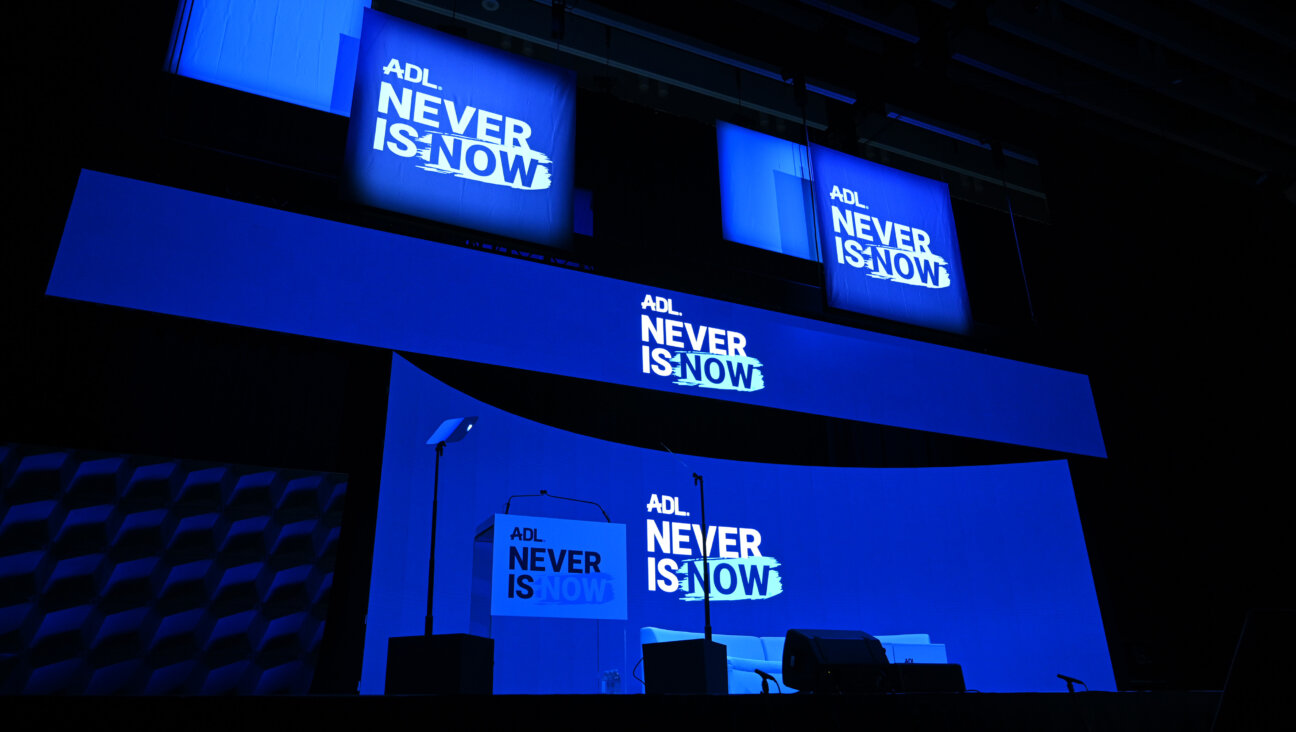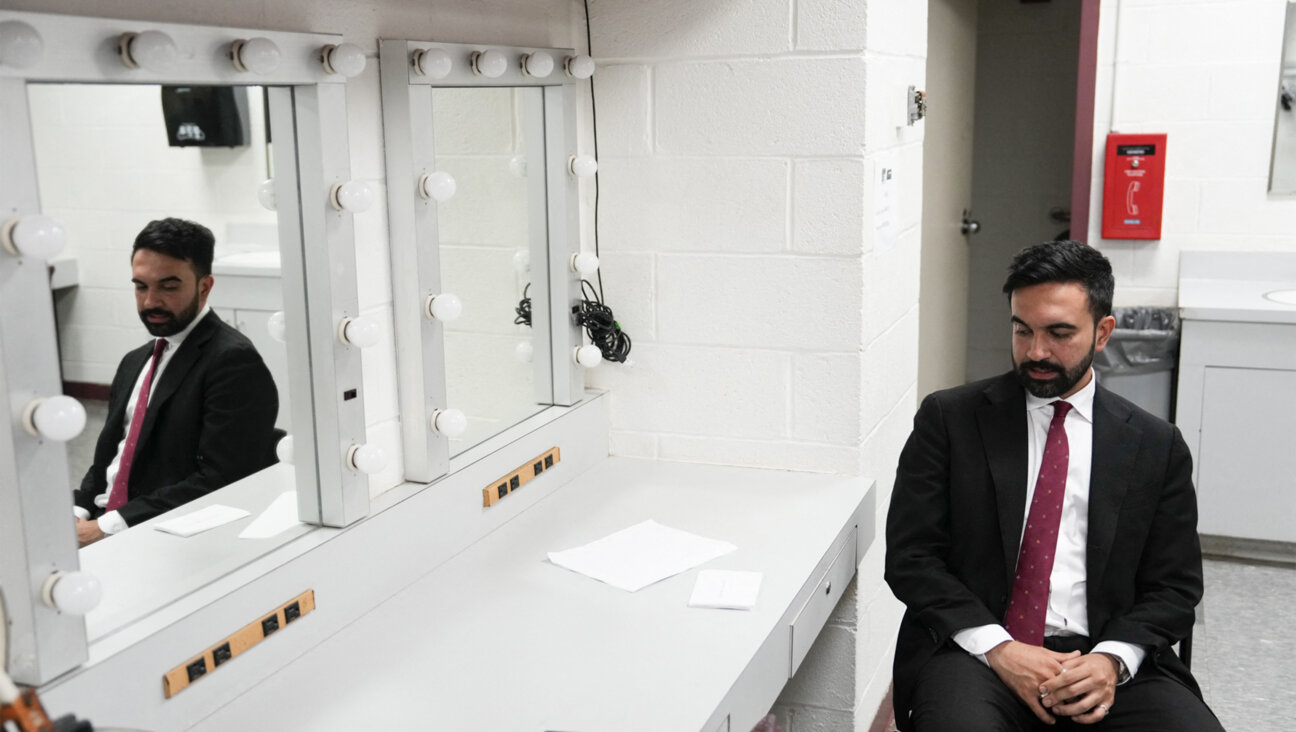East Ramapo trial offers fraught question: Should Hasidic Jews be considered ‘white’?

The federal district courthouse in White Plains, N.Y. Image by Ari Feldman
Are Jews white? And if a white majority is overwhelmingly made up of Orthodox Jews, does it make any legal difference?
These are among the fraught questions at the center of a trial unfolding in U.S. District Court regarding the East Ramapo School District, which serves a spread of suburbs about an hour’s drive north of Manhattan and has been dominated by Orthodox Jews for more than a decade.
The local NAACP and several residents are suing the district, claiming its electoral system violates the landmark 1965 Voting Rights Act by disenfranchising black and Latino residents. Lawyers for the district, though, say the lawsuit unfairly targets another ethnic group that has seen its share of discrimination: Orthodox Jews.
“Plaintiffs use euphemisms and code words like ‘private-school community,’ ‘white community’ and ‘white-preferred candidate’ instead of saying what they really mean in plain English,” David Butler, a lawyer for the district, said in his opening argument. “That’s because plaintiffs are reluctant to say what this case is really about.
“This case is about Orthodox Jews,” Butler said. “It’s about the concern that the Orthodox Jews are taking over the district and its elections.”
East Ramapo’s board of education has long been elected “at large,” meaning voters across the district’s 35 square miles vote for all nine members. The plaintiffs want to replace that system with a geographically based ward system, where residents in each area would vote for a single member. They contend that more likely ensure representation of the areas various racial minorities, given its highly segregated housing patterns.
The district is unusual because it serves 9,000 students — nearly all of them black or Latino — in its 14 public schools, while providing state-mandated transportation and special-education services to 30,000 private school students, almost all of whole are Orthodox students who attend yeshivas.
Orthodox Jews represent over half of the area’s residents, and tend to have high voter turnout: since 2008, the board has had at least five members who are themselves Orthodox, as well as some black and Latino members who have backed the Orthodox majority’s policy agenda.
The main battle is, as in many school districts, over the budget. Over the past decade, the East Ramapo board has dramatically cut funding for teachers, teacher aides and after-school programs, as transportation costs for the swelling Orthodox/yeshiva population have skyrocketed and state allocations dwindled. Some positions and programs have been added back, but public school graduation rates remain low.
The district disputes the idea that this conflict has anything to do with race or disenfranchisement of minority voters. Instead, it says the fight is over policy — for example, whether or not to raise property taxes to cover increasing district expenses.
But the law under which the NAACP is suing — Section 2 of the Voting Rights Act — is about protecting the rights of racial minorities. After the Supreme Court ruled in 1980 that plaintiffs alleging a violation of Section 2 have to prove discriminatory intent, Congress in 1982 updated the law to make it apply to any system that has the effect of disenfranchising racial minorities.
In the East Ramapo trial, which began last week in White Plains, N.Y., lawyers for the NAACP have repeatedly tried to argue that this case is not about religion but about the effect of the voting system on blacks and Latinos. And they have, as Butler pointed out, excised almost all references to Jews or the Orthodox community from much of their litigation documents.
Corey Calabrese, a lawyer representing the NAACP, said during her opening argument: “Your Honor will hear a lot about the Jewish community over the next few days, but just because many of the white people in East Ramapo are Jewish does not change the harm that the minority community suffers due to their exclusion from the political process.”
One expert who has studied the East Ramapo district said that the NAACP’s legal team may be avoiding making their case about the growing Orthodox community for political reasons as well.
“If I were them, I would do what they’re doing, which is try to avoid the word ‘Jewish,’” said Aaron Saiger, a professor of law at Fordham University. “Litigation like this isn’t a purely legal matter—it occurs in a political context. The last thing anyone at the NAACP wants is to have the perception that this is about anti-Jewish animus of any kind.”
The district’s strategy, in response, has been to frame the situation as a conflict not between different ethnic groups, but two interest groups — those who send their children to private schools, and those who are in the public schools. District lawyers have questioned nearly every witness so far on who they consider to make up these two communities, and why they have supported candidates representing those constituencies.
The answers have been fairly consistent: Witnesses for the plaintiffs, under questioning by district lawyers, have repeatedly answered that they voted for candidates preferred by the public school community for reasons having nothing to do with their race. Indeed, certain elections have pitted black candidates backed by the Orthodox community against white candidates endorsed by advocates of the public schools.
As to who the private-school community is, the answers are consistent as well: Orthodox Jews, since 90 of the district’s 92 private schools are Jewish.
“The private-school community wants to elect like-minded individuals to the board that want lower taxes, so they come out and vote, like it matters,” said Joel Freilich, a Hasidic man who currently sits on the board.
There seems to be little disagreement on this point. Eric Goodwin, a plaintiff in the case who ran unsuccessfully for the school board in 2017, said in an affidavit that during the campaign, Aron Wieder, an Orthodox Jew who represents the area in the county legislature, told Goodwin, who is black, not to waste time “campaigning in the predominantly white neighborhoods because the white community members would not vote for you.” Goodwin affirmed that he understood Wieder to be referring to Orthodox towns like Monsey.
The public-school community, witnesses for the plaintiffs have testified, is a multiracial coalition—including some black and Latino people who send their children to private schools—who are concerned about the declining quality of the district’s schools over the past 15 years. It “is not a racial classification,” Chevon Dos Reis, a black and Latina woman who ran unsuccessfully against Freilich in 2017 told the judge.
Whether this kind of argument will work on the judge in the case could have repercussions for similar litigation elsewhere. More and more Section 2 cases are straying from the racial dynamics the law was designed to address: whites vs. blacks, or whites vs. Latinos. Now there are cases where black minorities challenge Latino majorities, or where Asians challenge majority-white districts, according to Michael Li, senior council at the Brennan Center for Justice.
If judges rule that Section 2 does not apply to cases where the groups in conflict are ethnic minorities — and if the Supreme Court agrees — it could mean the end of Section 2, one of the most significant pieces of civil-rights legislation in U.S. history, Li said.
Yet at the close of the session on Friday, the judge in the East Ramapo trial, Cathy Seibel, signaled her disinterest in the question of who is in which community. Instead, she said, those kinds of questions get at what appear to be a more substantive issue for her, namely, what is driving voting patterns in the district, concerns about race or concerns about policy?
Seibel’s comments came during a discussion over the opinions written for another Section 2 case, called Goosby v. Town of Hempstead. A lawyer for the district, Randall Levine, argued that the Goosby decision outlined a kind of ruling for a Section 2 case in which the judge could find that there is vote dilution of racial minorities, but decide that the election results were still driven by policy, and thus not illegal. As Seibel put it, a judge could find that minorities are “just on the losing team” of the political process, not that they were illegally disenfranchised.
Seibel said the East Ramapo case is complex because the policy lines tend to follow racial lines.
“If you made a Venn diagram of minority people, and people who support the public schools,” she said, “they would almost completely overlap, but not completely.”
Ari Feldman is a staff writer at the Forward. Contact him at [email protected] or follow him on Twitter @aefeldman























